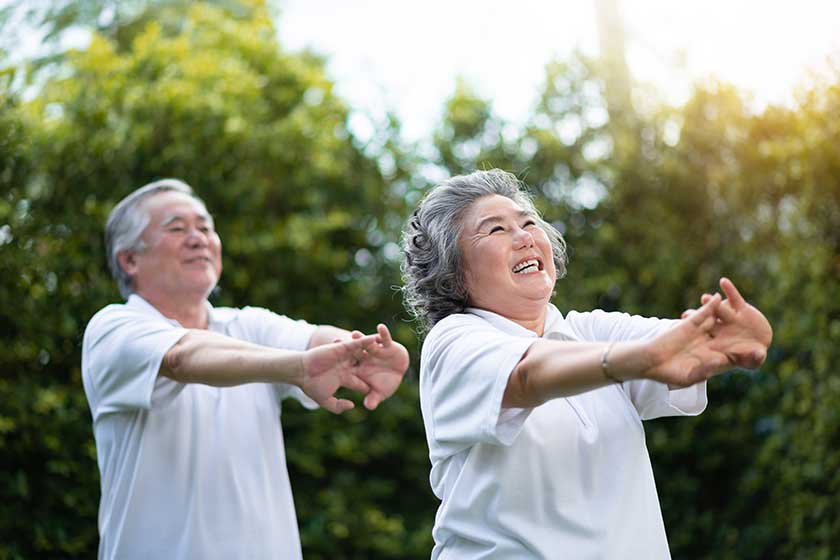Maintaining movement might be challenging for many elderly people. As we become older, our muscles and joints weaken, and our range of motion decreases. Stretching develops and maintains muscle strength, enhances joint flexibility, and increases circulation and blood flow, thereby promoting healthy aging and a higher quality of life for your loved ones.
Allow us at Discovery Commons At Wildewood to tell you about the benefits of stretching exercises for your loved ones.
It Helps to Reduce Arthritis and Lower Back Pain
The most prevalent causes of lower back discomfort in older persons are osteoarthritis and spinal stenosis. Osteoarthritis is characterized by the slow deterioration of cartilage between the facet joints. The narrowing of the bone channel occupied by the spinal nerves or cord is known as spinal stenosis.
While osteoarthritis and spinal stenosis are unavoidable consequences of aging, the discomfort they cause can be alleviated with stretching exercises. Your loved ones can benefit from regular stretching because it improves flexibility, range of motion, and elasticity, which helps to reduce stiffness in the affected joints.
However, it is understandable that stretching and moving these joints might be difficult and uncomfortable. Warming up tight muscles with a heat pack before stretching and cooling down muscles with an ice pack following exercise can help lessen discomfort and reduce swelling in the joints. Your loved ones could also enlist the help of stretching equipment or another person.
It Helps to Lower the Chances of Falling
Falling is a big issue for older persons, especially those aged 65 and over. Regular bouts of stretching have been shown to be beneficial to balance and stability, as well as preventing falls. Fall prevention in older persons requires increased flexibility in the hamstrings, quadriceps, and lower back, as well as increased hip joint mobility.
It Helps to Change and Correct Bad Posture
Fluid content in connective tissue—such as tendons and ligaments—declines as we age, resulting in decreased suppleness and flexibility. Poor posture is caused by the tightening of tendons and ligaments in the shoulders and the chest, as well as years of sitting bent over at a desk. A forward head position, rounded shoulders and upper back, and forward pushing hips are all signs of poor posture. In this situation, the spine’s inherent S-curve would be compressed.
Pain in the lower back and between the shoulder blades may happen as a result of this. Stretching on a regular basis is a simple way to improve flexibility. This will assist to release stiff muscles, tendons, and ligaments, allowing you to move more freely. Supplementing strength training activities with a stretching regimen will help to balance out weaker muscles while also providing the benefits of flexibility to improve bad posture.
It Helps to Increase Energy Levels and Promote Blood Flow
Dynamic stretching is a low-effort stretching method that involves moving your muscles. In comparison with static stretching, which includes stretching while your body is immovable, dynamic stretching involves stretching while your body is moving. Stretching dynamically lengthens muscles while simultaneously enhancing circulation and nutrient flow throughout the body. As a result, the energy levels in the body will increase. Increased energy is essential for older people to maintain their independence, be sociable, and age well.







